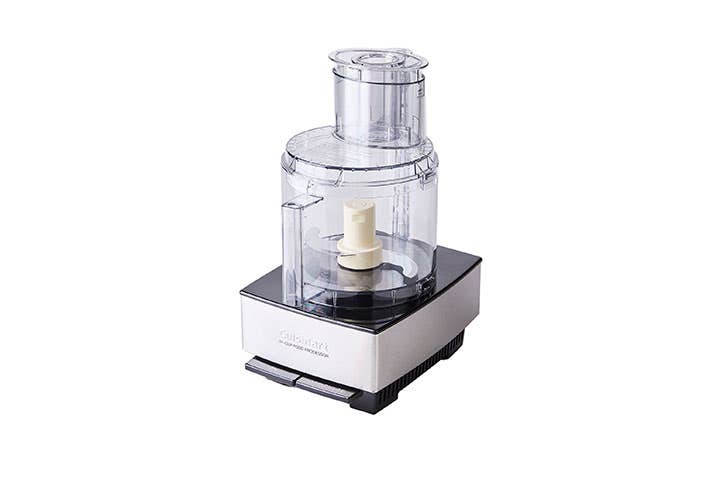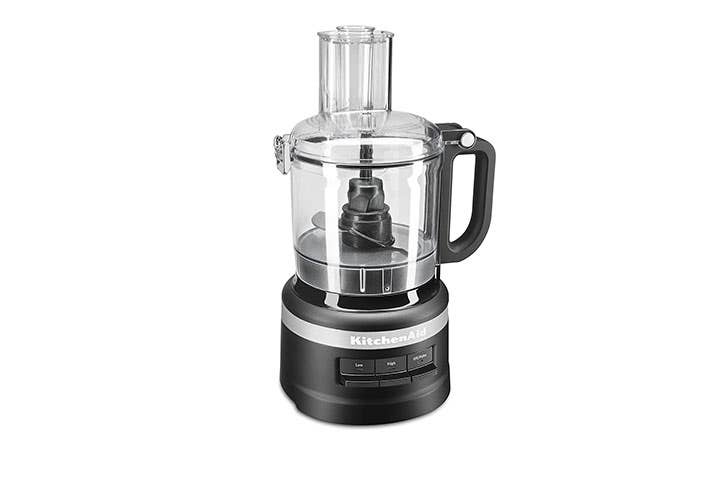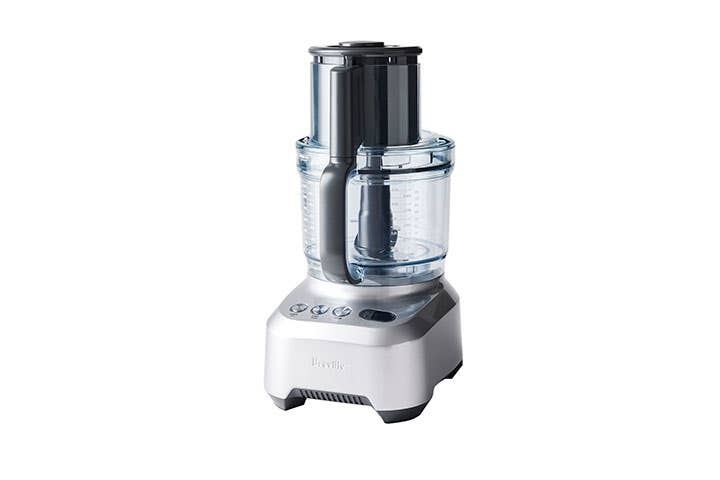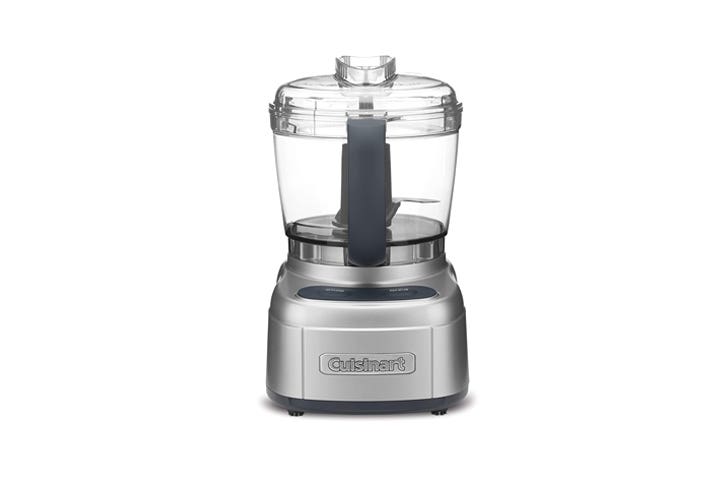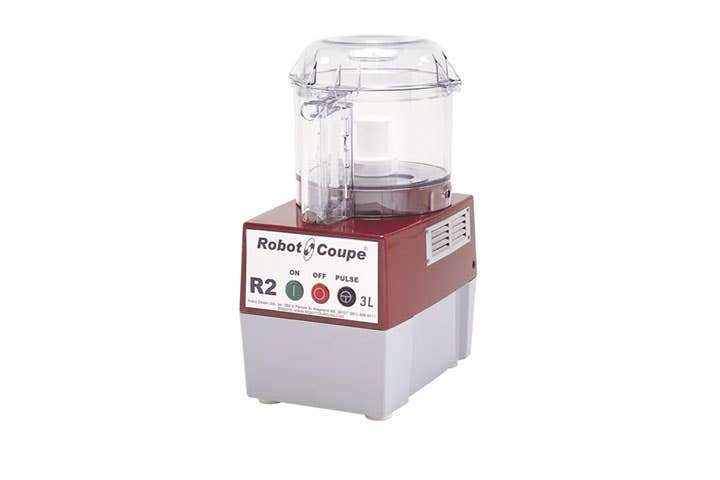The Best Food Processors in 2022
From little sidekicks to large models with bells and whistles, the right food processor is a lifesaver in the kitchen.
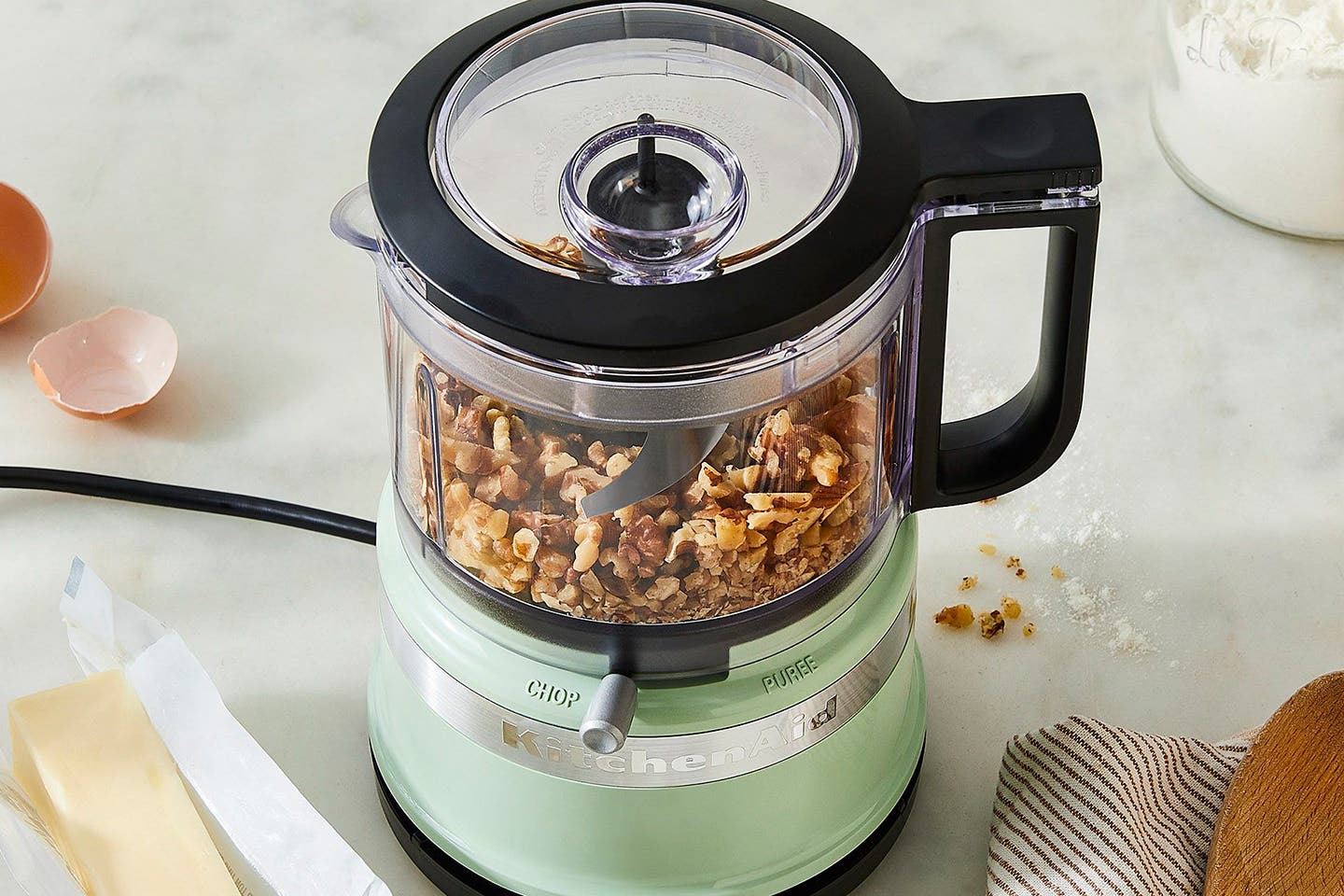
If you’re on the fence about whether you truly need another kitchen appliance in addition to that blender, Instant Pot, or air fryer, we must advise you that the best food processors are absolute taskmasters in the kitchen. For batch cooking, cooking for a group, or meal prepping, it’s truly a timesaver, allowing you to quickly shred pounds of cheese, process large amounts of dough, or even slice veggies in a matter of seconds.
SAVEUR’s Editorial Director, Kat Craddock, has two food processors to get the job done. “I use the little one a lot more often, like if I want to make a garlic paste for Indian food and don't feel like getting out the mortar and pestle or large processor.” The bigger processor is reserved for large quantities and special purposes like grating cheese or pureeing a large batch of hummus.
There’s a place for a food processor in every kitchen, truly, regardless of budget or size. Check out our picks for the best options for you.
Our Top Picks
- Best Overall: Cuisinart 14-cup
- Best Value: KitchenAid 7-Cup Food Processor
- Best for Spacious Kitchen: Breville Sous Chef
- Best for Small Spaces: Cuisinart Elemental 4-cup
- Best for Professionals: Robot Coupe
Best Overall: Cuisinart 14-cup
Best Overall
Wattage: 720 watts | Capacity: 14 cups | Number of speeds: 1 | Warranty: 5-year
Pros
- Simple operation with two buttons
- Comes with stainless steel standard slicing disc (4mm), medium shredding disc, and stainless steel chopping/mixing blade
- Large feed tube
Cons
- Large size
- Does not include a smaller bowl insert
Why we chose it: Cuisinart has proven itself as one of the best brands for food processors over the years, and its 14-cup model has ideal functionality and size for just about any purpose.
This food processor does exactly what it's designed to do: efficiently chop, slice, shred, and mix anything you throw at it. The large feed tube makes it easy to drop in whole vegetables for slicing and chopping, or even large chunks of cheese for shredding. The bowl size is great for making any amount of food, though some users (myself included) would have liked the inclusion of a smaller bowl insert for littler tasks, like making vinaigrettes or sauces.
Best Value: KitchenAid 7-Cup Food Processor
Best Value
Wattage: 250 watts | Capacity: 7 cups | Number of speeds: 3 | Warranty: 1-year
Pros
- Cheerful color
- Versatile, mid-size bowl
- Strong motor for size
Cons
- Slightly unstable while in use
Why we chose it: The perfect companion for cooks who aren’t planning on making large batches from a trusted brand.
KitchenAid is known for its sturdy stand mixers, but that trust easily extends to its other products, including the 7-cup food processor. It is able to slice, shred, chop, and puree while maintaining a smaller profile on your kitchen countertop at a very respectable 7-cup capacity and price. For those who aren’t planning large prep sessions, this size should take care of almost all of your everyday food processing needs, and it comes in a series of attractive colors, including our favorite, Empire Red.
Best for Spacious Kitchen: Breville Sous Chef
Best for Spacious Kitchen
Wattage: 1,200 watts | Capacity: 16 cups and 2.5 cups | Warranty: 1-year
Pros
- Extremely powerful
- Quiet
- Adjustable slicing disc
Cons
- Large
- Expensive
- Not dishwasher safe
Why we chose it: Breville’s Sous Chef is a mighty tool in the kitchen (if you have the space), that can take care of any food processing need in record time.
Breville always brings the bells and whistles with its sleek appliances, and the Sous Chef is no exception. It’s exceptionally powerful, with the ability to create smooth nut butters or hummus, swiftly slice vegetables thinly for any application, or adjust for thick cuts like steak fries. It’s an all-purpose prepping machine that comes with a small bowl for smaller tasks, and a large bowl for mixing, pureeing, and slicing vegetables. The best feature of all is the adjustable slicing disc that allows you to fine-tune the size of your slices from paper-thin to ⅓-inch thickness.
Best for Small Spaces: Cuisinart Elemental 4-cup
Best for Small Spaces
Wattage: 250 Watts | Capacity: 4 cups | Number of speeds: 2 | Warranty: 1-year
Pros
- Dishwasher safe
- Compact size for easy storage
- Separate controls for chopping and grinding
Cons
- Less powerful motor than larger models
- No additional accessories
Why we chose it: The ideal size for small tasks in the kitchen with the same capabilities as its larger brethren.
With the power of Cuisinart in a small package, the Elemental can quickly chop, shred, grate, and puree with the best of them. It just happens to be easily stored and cleaned, due to its small size. It’s the same price as the longtime favorite Cuisinart Mini-Chopper, a petite 3-cup food processor, but offers more capacity and the ability to chop or grind at the touch of a button, making the Elemental a clear winner.
Best for Professionals: Robot Coupe
Best for Professionals
Wattage: 840 watts | Capacity: 3 liters | Number of speeds: 1 | Warranty: N/A
Pros
- Heat- and shock-resistant lid
- Simple to use
- Indestructible
Cons
- Not aesthetically pleasing
- Only one function
- Heavy
Why we chose it: While most home cooks don’t require a commercial-grade food processor to get the work done, the Robot Coupe is the hardest working, simplest machine we’ve ever worked with.
If you’ve ever worked in a restaurant kitchen, you’ve come across the Robot Coupe, a heavy, large-and-in-charge machine that can grind pretty much anything to dust. Its industrial red and gray look is one clue, as is its single row of three large buttons: On, Off, and Pulse. It comes with one sharp, smooth S-blade that will easily process any ingredient you throw at it, from nuts to hard chocolate to doughs. It’s a big investment, but for anyone using their food processor daily, it will last a lifetime.
How We Chose These Products
Senior Commerce Editor Ellen Fort attended culinary school, has worked in professional kitchens, and continues to be an avid home cook. She’s encountered everything from tiny Cuisinarts to might Robot Coupes, and all the models in between. She also spoke with industry experts like SAVEUR's Editorial Director Kat Craddock to learn more about what makes a food processor truly outstanding.
Features to Keep in Mind When Shopping for a Food Processor
Power
The power level that’s best for you depends on the type of kitchen work you’ll be doing. For dense doughs, large batches, and prolonged use, a powerful processor like the Breville Sous Chef or Robot Coupe will serve you well. For occasional processing, like pestos, vinaigrettes, or nut butter, a smaller model with less power will work just fine. That said, if the motor seems to be struggling at any time, give the machine a rest so that the motor doesn’t burn out; wait for a second, scrape the sides of the bowl and start again.
Size & Dimensions
Consider available storage and counter space when purchasing an appliance like this. The larger models are hefty, and not conducive to hauling around the kitchen; smaller models like the Cuisinart Elemental are easy to shuffle in and out of cabinets.
Speed & Settings
For most uses, a single setting with the addition of a pulse function is sufficient. Some models include specific settings for chopping or grinding, though that is typically easily done using one speed.
Accessories & Attachments
Most food processors do not come with a bevy of extra attachments. Larger models may come with a shredding disc, grating disc, dough blade, and chopping blade. Smaller models typically do not include attachments.
Ask the Experts
Q: What’s the difference between a food processor and a blender?
A food processor is designed for dense, less liquidy applications (though vinaigrettes and nut butters are still well-suited) that must be chopped or ground, like pie dough or chickpeas for hummus. A food processor also leaves a courser texture when pureeing, versus a blender that will use a smaller blade and high speed for a very smooth texture.
Q: How do I clean my food processor?
Warm soap and water are your best bet. Typically the polycarbonate bowls will clean very easily when scrubbed by hand. Many are dishwasher safe, but make sure to double-check the manual before loading them.
Q: Do all food processors come with a warranty?
Not necessarily. Make sure to check the manufacturer’s website for clarification on the length of the warranty and what it covers before purchasing.
Q: Can food processors replace blenders?
No. “I never like to do anything sloshy or wet in a food processor,” says Craddock. “It’s not airtight and it’s going to splash up over the sides so I use a blender or immersion blender or a regular blender for smoothies, or vichyssoise for anything that's drinkable or eatable on a spoon.”
Our Take
There’s no getting around it: Food processors can take up a lot of valuable space. However, once you’ve truly explored the vast capabilities of these machines, your kitchen prep work can become miles easier. Choosing the right processor for you is all about how much you cook, and where you can store it, really.
Keep Reading
Continue to Next Story
